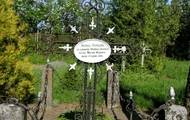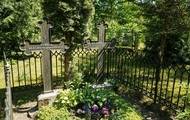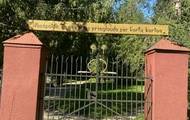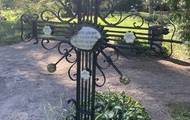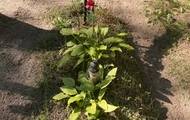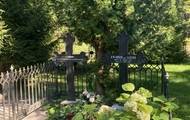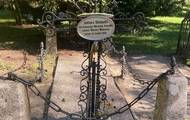This cemetery is the final resting place of the brigadier general Antanas Gelgaudas (1792-1831), one of the leaders of the uprising of 1831. He was a descendant of the family of Gelgaudai, the nobility of the Grand Duchy of Lithuania. Antanas Gelgaudas supported Napoleon I, personally funding an infantry regiment back in 1812, thus awarded with the rank of colonel for his merits to the French army. Later he joined the military service of the Dutchy of Poland. In 1818, he was the Commander, Brigadier General of the First Brigade of the First Division of the Congress Poland. In 1830, the Commander of uprising units in Poland. Then, a Commander of the uprising in Lithuania in 1830-1831. When the fighting ended up in failure, Gelgaudas decided to withdraw to Prussia and capitulate. He was shot by one of his officers, Captain Skulskis (or Stubskis), crossing the border near Agluona rivulet on the 13 July, accused of deserting the battlefield. Gelgaudas was buried there and his grave was marked with a stone, featuring an inscription about Gelgaudas in Russian, Polish, and Lithuanian languages. 3 or 5 years after the uprising, the Tsar satisfied the request of Gelgaudai family to have the remains of Gelgaudas reburied in Kisiniai cemetery, located 8 km from the border in Lithuania Minor (Klaipėda district, Dovilai volost). The grave was neglected and almost a 100 years later, with the approaching Gelgaudas’ death anniversary (circa 1928-1929), his descendants living in England (Gielgud) sent money, asking the elder of the village to have the grave properly repaired. The grave was decorated with a tall, ornamented cross and surrounded by a chain, hanging from concrete columns, built by Vilius Podžius from Chicago. The grave of Gelgaudas, who once wanted to liberate Lithuania from the tsarist Russia, became a gathering place for the youth of Lithuania Minor.
The area of Kisiniai Ethnographic Cemetery is approximately 2310 m2 and has about 100 graves. The oldest graves date back to the early 19th c. The oldest tombstone cross was built in 1831, but historians assume that the cemetery was used even before that. There is also the grave of Johanas Ferdinandas Kelkis (Kelch, 1801-1887), a pioneer of Lithuanian journalism, who condemned the Germanisation of the Prussian Lithuanians. When Lithuanian language was removed from the school curriculum after 1872-1876, he sent petitions to the Prussian King and German Emperor Wilhelm I, and the minister of education and culture, asking to allow using Lithuanian language at least for religion lessons.


